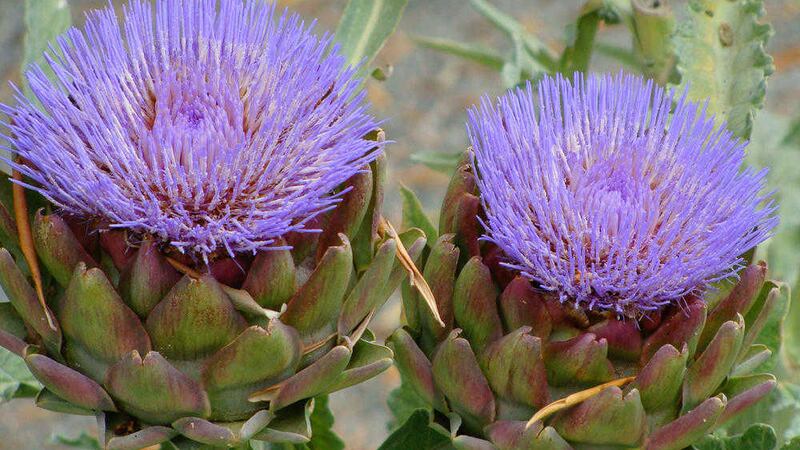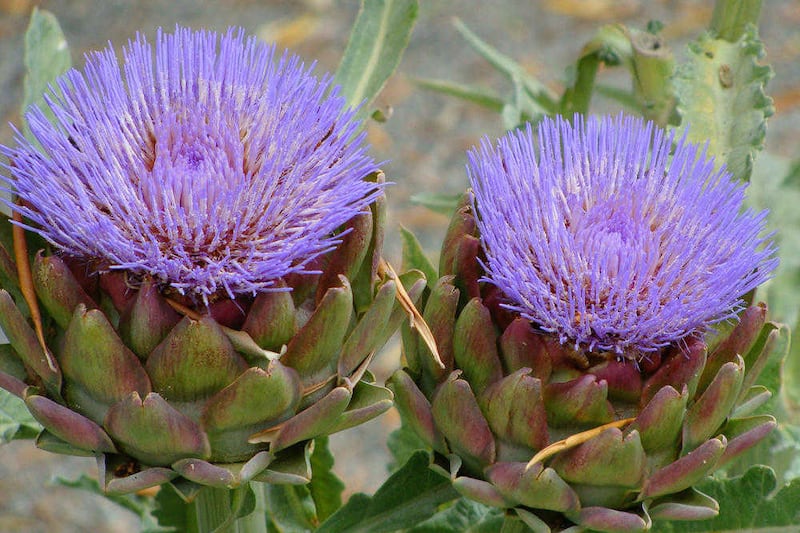ARTICHOKE is a word most adults would be familiar with but ask the same people what an artichoke plant looks like and you’re likely to draw a blank.
There are in fact two unrelated types of artichoke, which differ significantly – the Jerusalem artichoke and the globe artichoke. The former (Helianthus tuberosus) is a root vegetable harvested from autumn through to winter. The tubers are roughly the shape and size of Sammy Wilson’s index finger and have a distinctive smokey flavour when roasted. However, they have been known to induce bouts of flatulence if eaten in any quantity.
I grew some around a decade ago and on occasion suffered the above-mentioned bouts of flatulence. I quickly concluded they were little more than an occasional novelty that weren’t worth the effort.
The globe artichoke (Cynara scolymus), on the other hand, is a plant I love, though I must confess that my fondness stems almost solely from its ornamental qualities. It is an imposing plant with large silvery leaves that evoke prehistory. Striking but far from pretty, the globes from which it takes its name can mature up to two-and-a-half metres above ground on top of thick stalks. They appear as plum-sized bulbs, swelling over a matter of weeks to the size of big grapefruit.
I’ve had my plants close to 15 years, over which time they’ve endured at least two transplantings and on occasions sub-zero temperatures yet still thrive. In my own garden they occupy a space that straddles the edible and the ornamental areas though I personally place them very much in the latter category.
I have eaten the globes – that’s the edible bit – in the past, which involves taking the leaf scales and, one by one, dipping them in melted butter (or such like) before sucking out the juicy flesh from each. This again is something of a novelty and much less convenient than a bacon sandwich; however, the scales are only an appetiser for the succulent artichoke heart that lies at the centre of the flower, the vegetable centrepiece of every antipasto.
But still I don’t harvest them in my own garden in the same manner I’d take tomatoes from the vine or spuds from the earth. I’m unable to bring myself to vandalise a plant as it reaches its prime by removing immature flowers. Instead I allow them grow to full maturity and let the rich purple flowers open and become a magnet for bees. If you do plan to eat them, they should be harvested soon after the globes first appear, as the older the flower the more bitter its taste.
Most varieties have similar flavour, though the look of the globe may differ. ‘Green Globe’ is a common variety with large heads and fewer spikey scales, while ‘Purple Globe’ is hardier though doesn’t score as highly in the flavour ratings. ‘Vert de Laon’ is widely available and ticks all boxes; 'Camus de Bretagne’ is the aficionados' artichoke but is more susceptible to frost.
While Dr DG Hessayon – author of the popular ‘Expert’ series of books – describes the globe artichoke as ‘a fussy plant in many ways’, this is not my experience, though then again I haven’t been growing mine to maximise yield.
They do of course prefer fertile, well drained soil but hardly rank among the most demanding plants, needing little more than tidy up once a year. While they can suffer petal blight and occasionally be troubled by aphids, the only problem I’ve encountered is wind damage, which can leave those towering stalks at a 45 degree angle.



